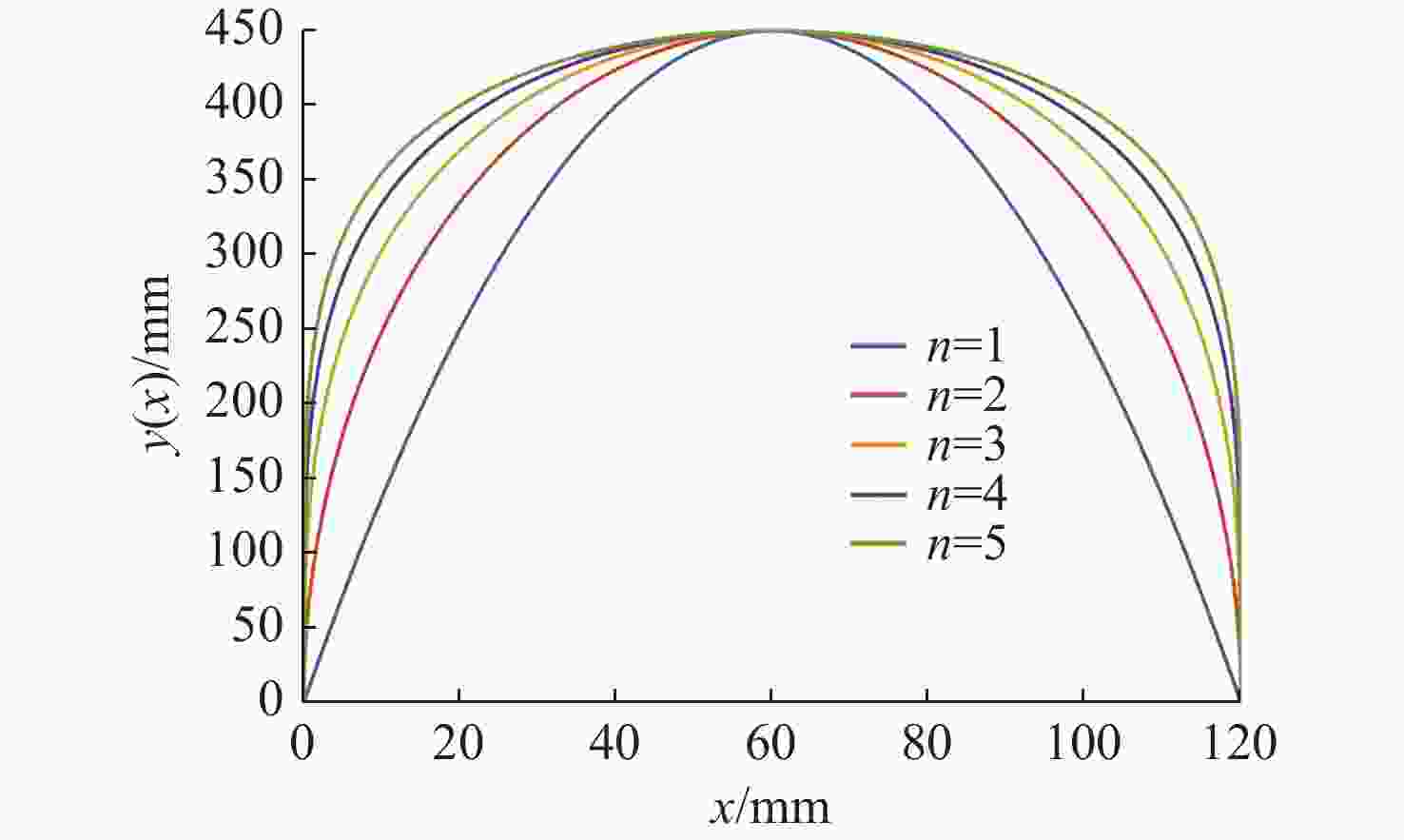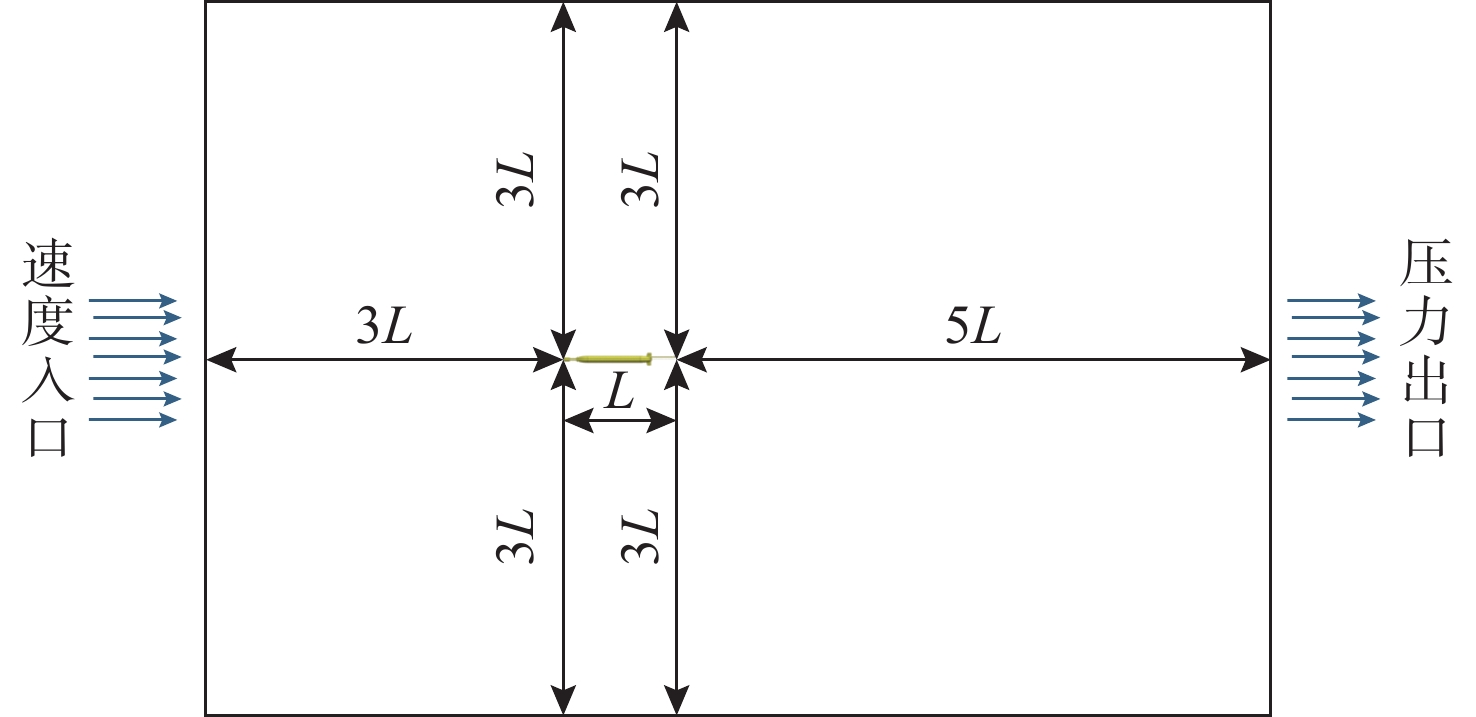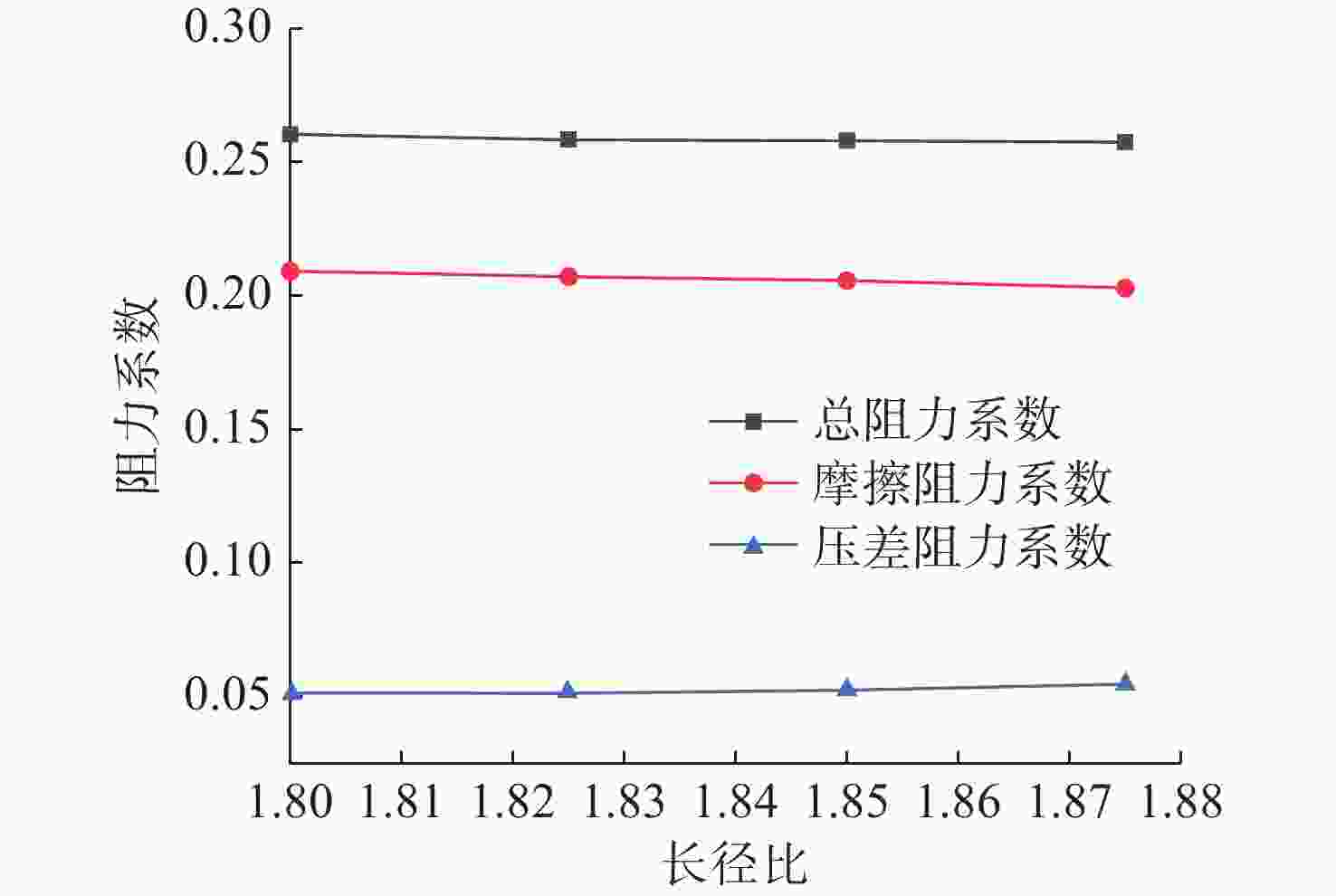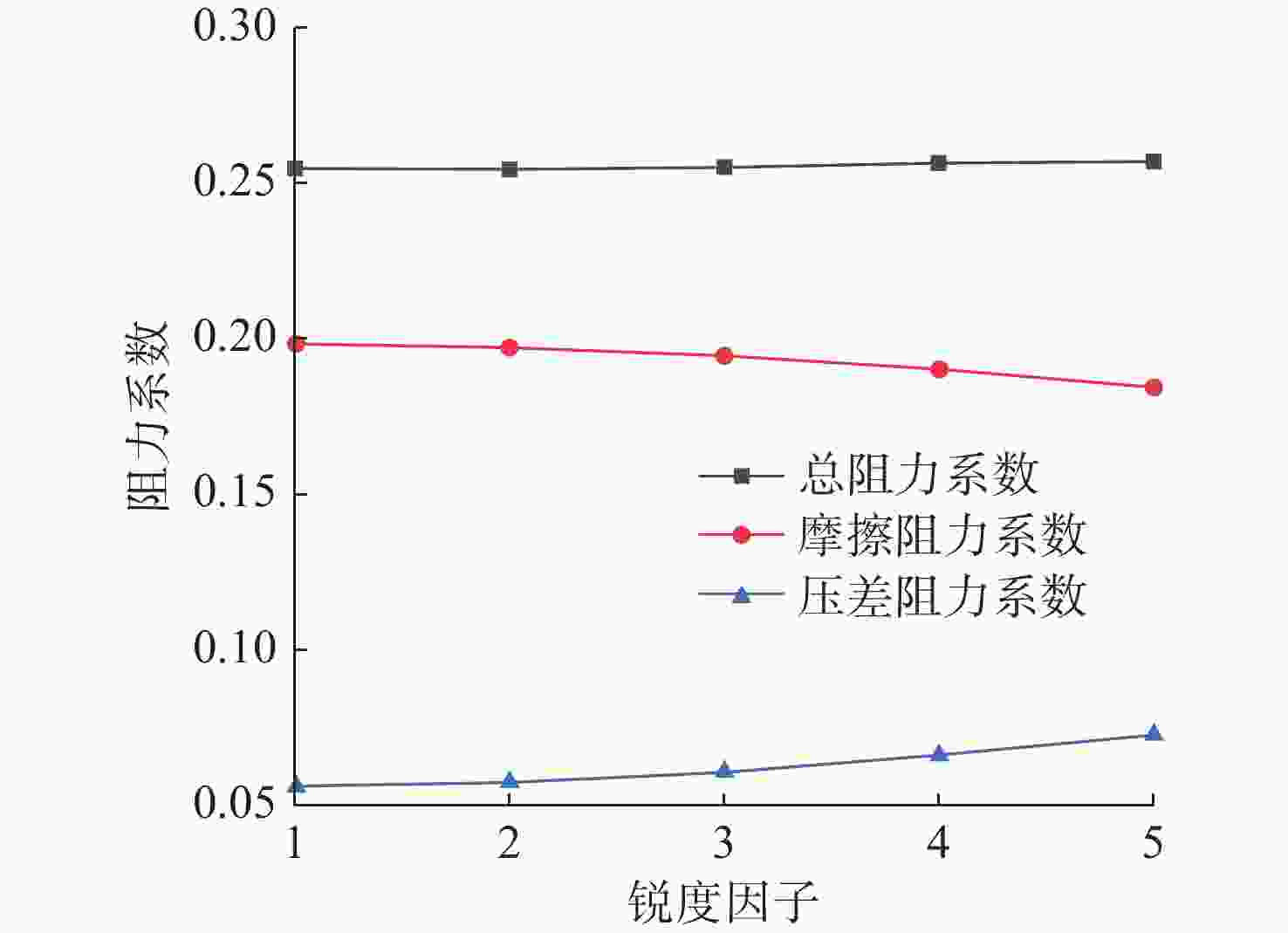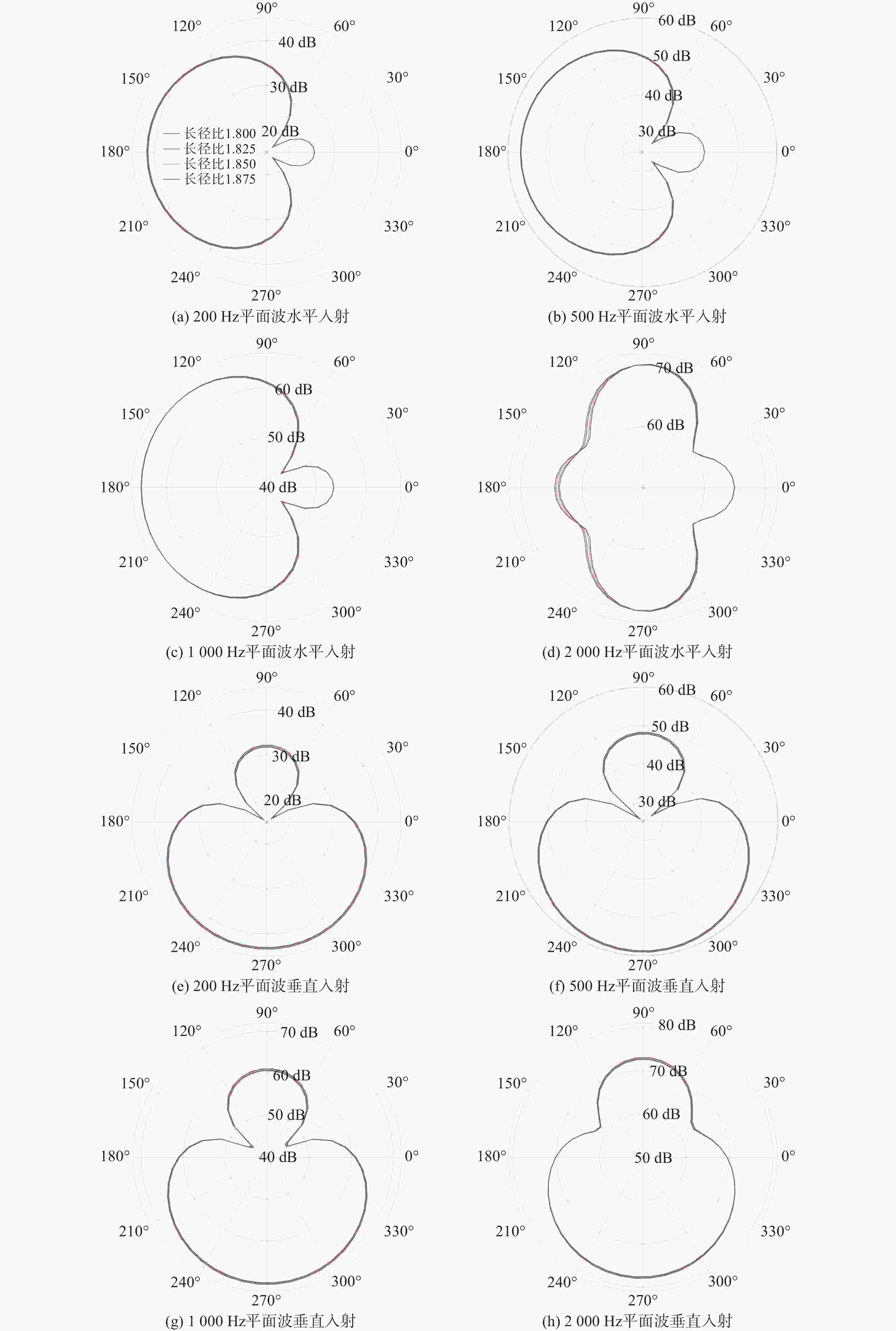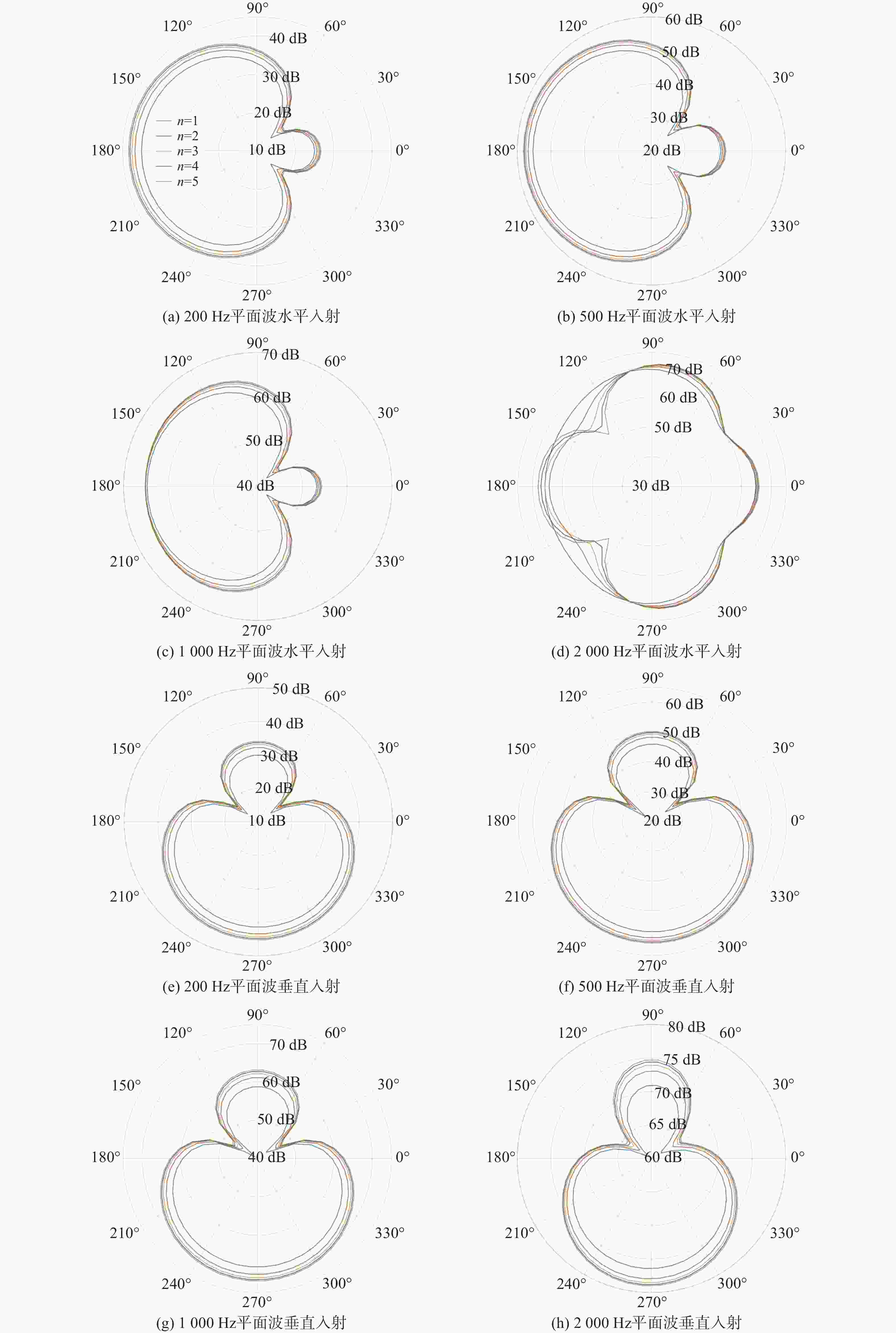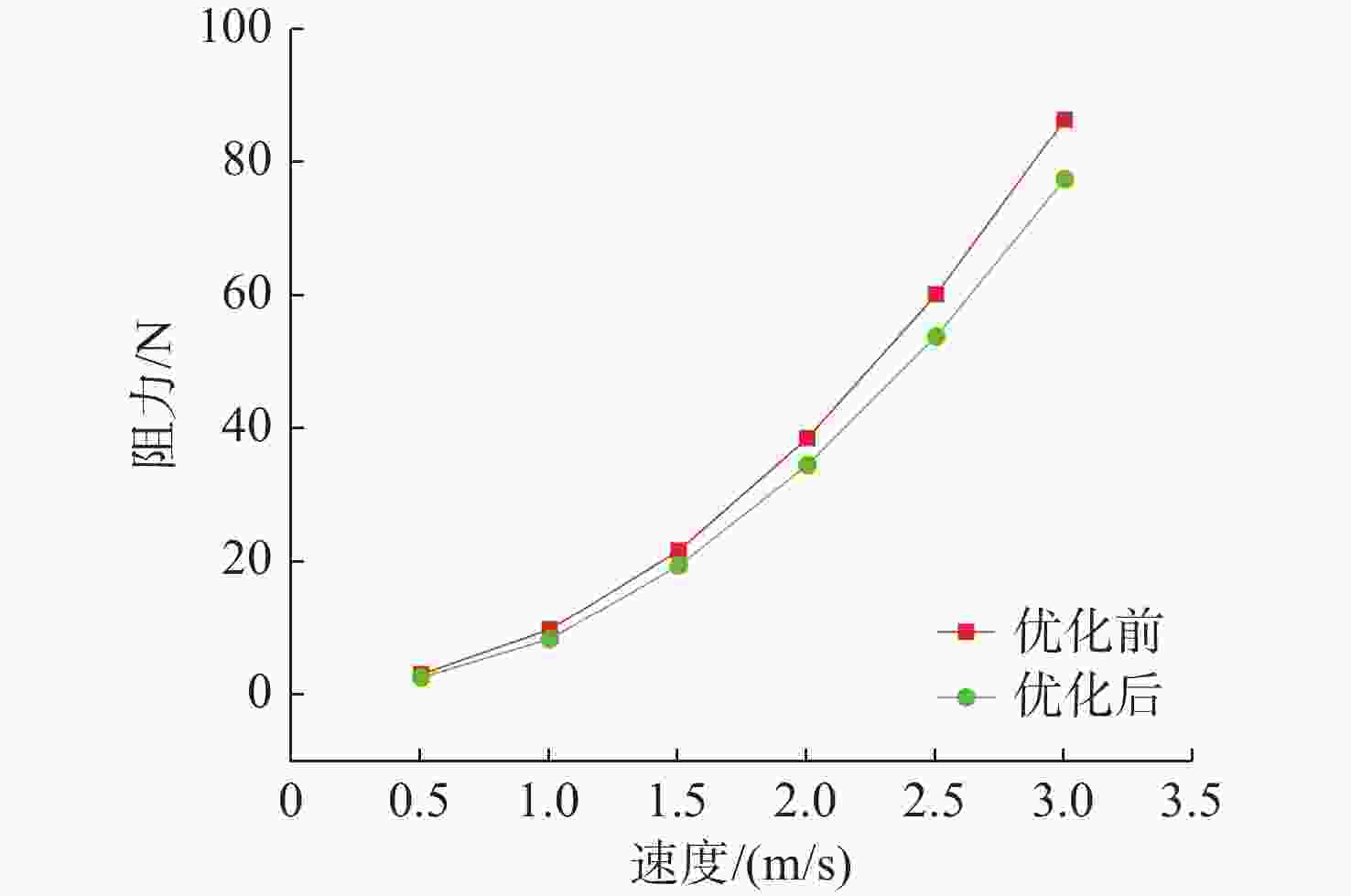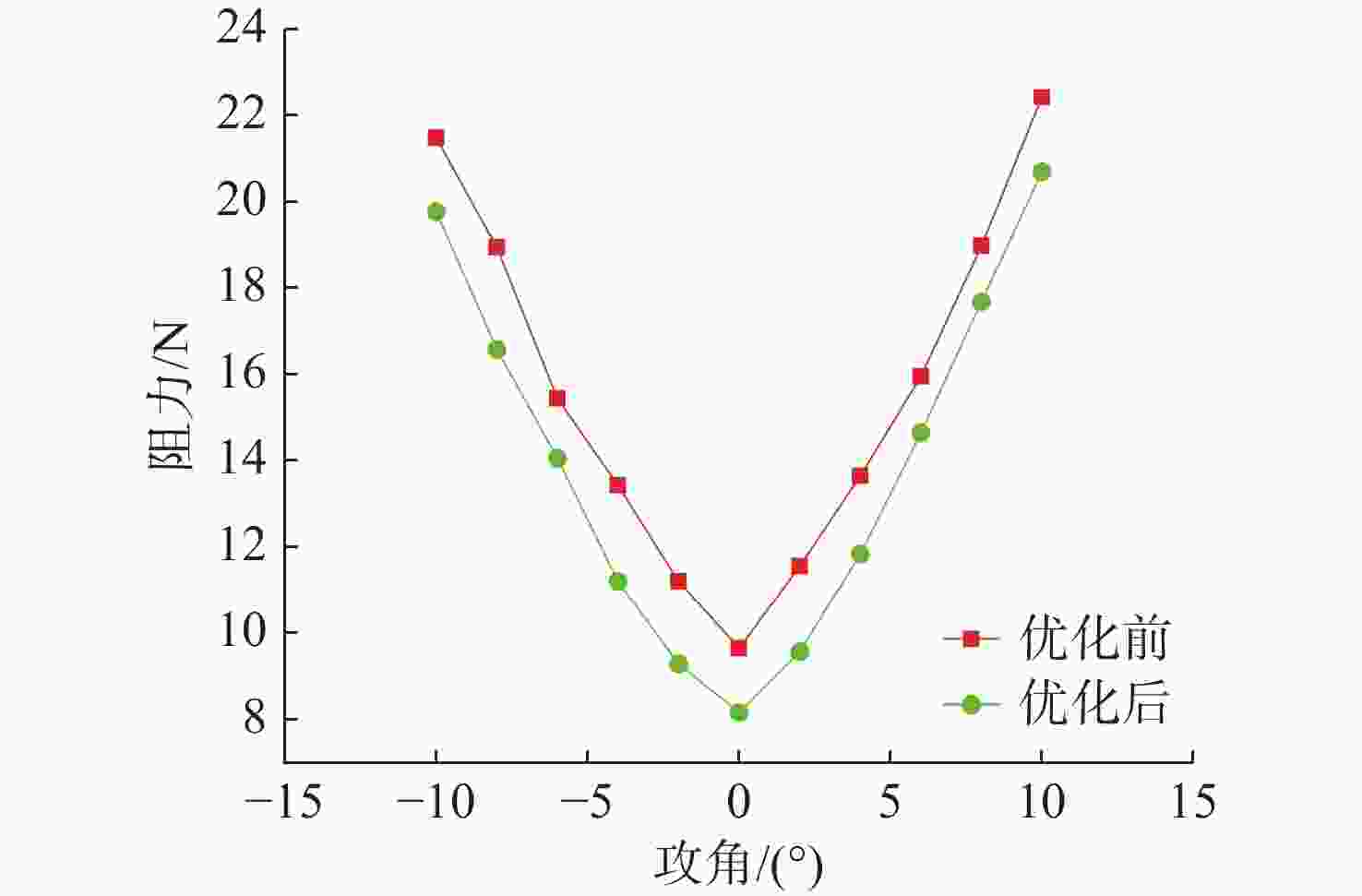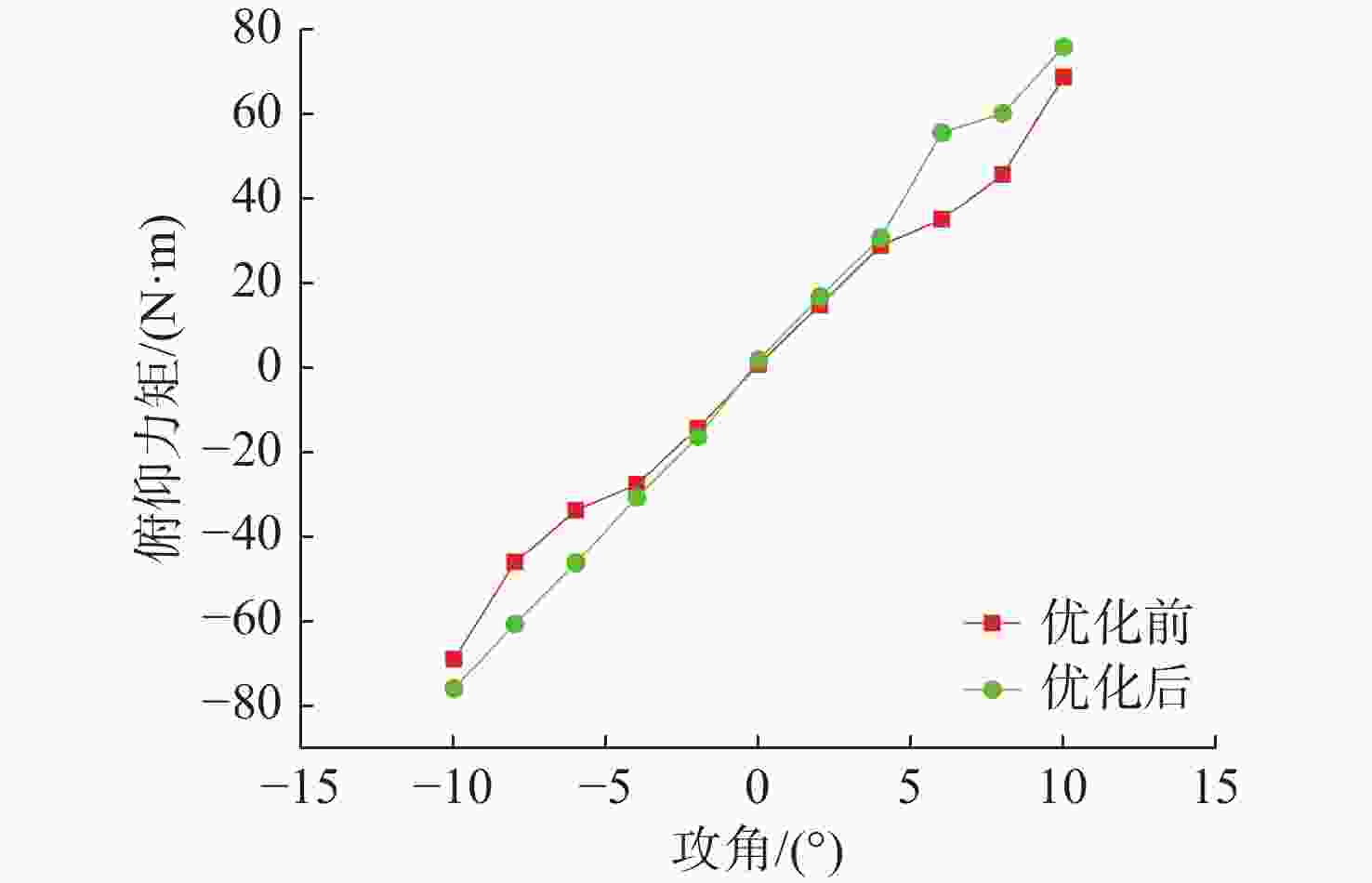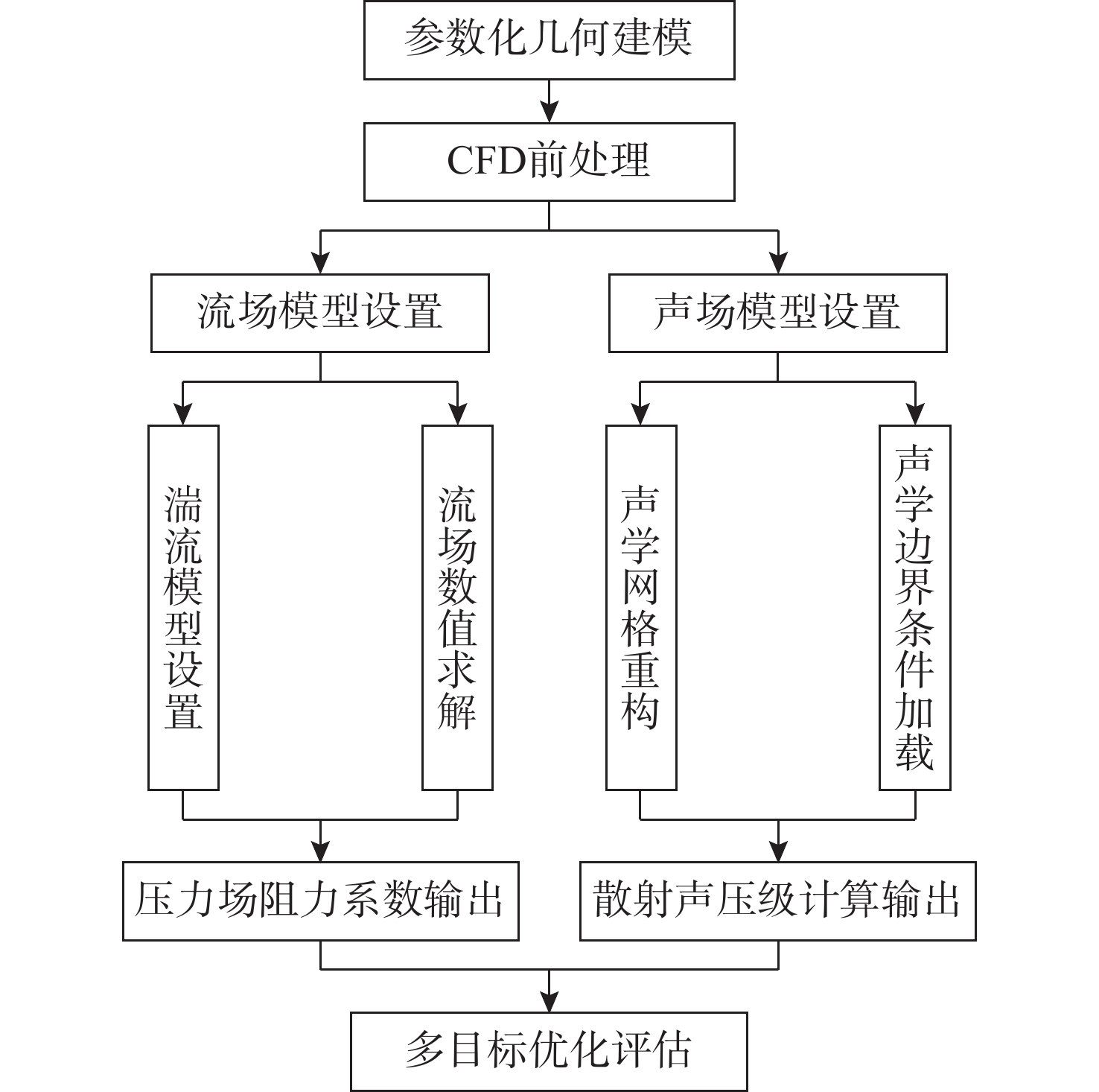Optimization Design and Simulation of Acoustic Adaptation Structure for Underwater Gliders
-
摘要: 针对长续航水下滑翔机(UG)声学适配结构设计中流体动力性能与声学探测性能难以协同优化的技术瓶颈, 提出一种融合流线型减阻与声学散射增强的双目标协同设计方法。通过构建计算流体力学-有限元法(CFD-FEM)多物理场联合仿真框架, 创新性地整合任意区域湍流流动-计算连续体力学(STAR-CCM+)粘性流体求解器与COMSOL Multiphysics声固耦合模型, 突破传统单学科优化局限, 实现流体动力特性与声场散射特征的全耦合分析。基于Myring线型方程建立参数化几何模型, 引入锐度因子和长径比作为关键设计变量, 采用智能优化算法开展多目标协同寻优。研究结果表明: 优化后的声学适配结构在0.5~3 m/s航速范围内总阻力降低10.4%~15.6%, 其中长径比为1.875、锐度因子n=2的构型在1 m/s航速下阻力降低至8.178 N; 声学性能方面, 2 000 Hz平面波入射时散射声压级提升1.5 dB, 旁瓣抑制能力增强2~3 dB, 声学接收指向性提升显著。通过攻角试验验证, 优化方案在±10°攻角范围内保持阻力降幅6%~17%, 有效解决了传统设计中流体阻力与声学性能的耦合冲突。文中研究构建的“流-固-声”多物理场协同优化范式, 为新一代长航时-强探测复合型UG的工程化设计提供了理论支撑, 拓展了UG多学科优化方法体系。
-
关键词:
- 水下滑翔机 /
- 声学适配结构 /
- 外形优化设计 /
- 计算流体力学-有限元法联合仿真
Abstract: To address the technical bottleneck in balancing hydrodynamic efficiency and acoustic detection performance during the design of acoustic adaptation structures for long-endurance underwater gliders(UGs), this study proposed a dual-objective collaborative design method integrating computational fluid dynamics-finite element method(CFD-FEM) co-simulation. By coupling simulation of turbulent flow in arbitrary regions-computational continuum mechanics+(STAR-CCM+) for viscous flow analysis and COMSOL Multiphysics for acoustic-structure interaction, a parametric geometric model was proposed based on the Myring equation, utilizing the sharpness factor and aspect ratio as key variables. Multi-objective collaborative optimization was carried out by adopting intelligent optimization algorithms. The results indicate that the optimized acoustic adaptation structure achieves a total drag reduction of 10.4%–15.6% across a speed range of 0.5–3 m/s. Specifically, the configuration with an aspect ratio of 1.875 and a sharpness factor n = 2 exhibits a resistance reduction to 8.178 N at 1 m/s. Regarding acoustic performance, under 2 000 Hz plane wave incidence, the scattered sound pressure level increases by 1.5 dB; sidelobe suppression capability is enhanced by 2–3 dB, and acoustic reception directivity is improved significantly. Validation through angle of attack tests demonstrates that the optimized solution maintains drag reductions of 6%-17% within a ±10° angle of attack, effectively resolving the conflicting requirements between hydrodynamic resistance and acoustic performance inherent in traditional designs. The constructed “fluid-structure-acoustics” multiphysics collaborative optimization paradigm provides theoretical support for the engineering design of next-generation long-endurance, high-detection, and composite UGs and expands the UG multidisciplinary optimization methodology system. -
表 1 声学适配结构设计矩阵表
Table 1. Matrix of acoustic adaptive structure design
声学适配结构
长径比声学适配结构长度
/mm整机长度
/mm整机长径比 1.800 432 2 967 12.36 1.825 438 2 973 12.39 1.850 444 2 979 12.41 1.875 450 2 985 12.44 表 2 网格无关性验证
Table 2. Mesh independence verification
网格数量 总阻力/N 2.4989 ×10614.367 3.5334 ×10611.124 4.9963 ×1069.664 7.0648 ×1069.639 9.9923 ×1069.615 表 3 优化前后直航运动仿真结果对比
Table 3. Comparison of simulation results for direct flight motion before and after optimization
速度/(m/s) 总阻力/N 优化前 优化后 0.5 2.887 2.436 1.0 9.664 8.178 1.5 21.593 19.344 2.0 38.451 34.436 2.5 60.003 53.748 3.0 86.364 77.341 表 4 优化前后斜航运动仿真结果对比
Table 4. Comparison of simulation results of oblique navigation motion before and after optimization
攻角/(°) 总阻力/N 俯仰力矩/(N·m) 优化前 优化后 优化前 优化后 10 22.459 20.726 68.785 75.912 8 19.009 17.714 45.567 60.053 6 15.981 14.673 34.867 55.504 4 13.681 11.867 28.732 30.607 2 11.583 9.586 14.737 16.685 0 9.664 8.178 0.5674 1.703 −2 11.232 9.301 −14.429 −16.609 −4 13.461 11.235 −27.862 −30.873 −6 15.471 14.089 −33.941 −46.499 −8 18.972 16.611 −46.335 −60.873 −10 21.507 19.802 −69.227 −76.225 -
[1] MUGGLI F A, HOLBEIN P, DUPONT P. CFD calculation of a mixed flow pump characteristic from shutoff to maximum flow[J]. Journal of Fluids Engineering, 2002, 124(3): 798-802. doi: 10.1115/1.1478061 [2] 谷海涛, 林扬, 胡志强, 等. 基于代理模型的水下滑翔机机翼设计优化方法[J]. 机械工程学报, 2009, 45(12): 7-14. doi: 10.3901/JME.2009.12.007GU H T, LIN Y, HU Z Q, et al. Design optimization method for underwater glider wings based on surrogate model[J]. Journal of Mechanical Engineering, 2009, 45(12): 7-14. doi: 10.3901/JME.2009.12.007 [3] 张博, 张宇文, 李文哲, 等. 超空泡航行体前部线型对空泡生成速度影响实验研究[J]. 西北工业大学学报, 2008(5): 540-544. doi: 10.3969/j.issn.1000-2758.2008.05.003ZHANG B, ZHANG Y W, LI W Z, et al. Experimental study on the influence of forebody profile of supercavitating vehicle on cavitation generation speed[J]. Journal of Northwestern Polytechnical University, 2008(5): 540-544. doi: 10.3969/j.issn.1000-2758.2008.05.003 [4] 张博, 张宇文, 孙致月, 等. 超空化航行体前部外径对空泡影响的研究[J]. 西北工业大学学报, 2010, 28(6): 834-839. doi: 10.3969/j.issn.1000-2758.2010.06.006ZHANG B, ZHANG Y W, SUN Z Y, et al. Study on the influence of forebody diameter of supercavitating vehicle on cavitation characteristics[J]. Journal of Northwestern Polytechnical University, 2010, 28(6): 834-839. doi: 10.3969/j.issn.1000-2758.2010.06.006 [5] 郑帮涛. 航行体头型对气泡附着影响的数值研究[J]. 船舶力学, 2015, 19(7): 757-764. doi: 10.3969/j.issn.1007-7294.2015.07.001ZHENG B T. Numerical study on the influence of vehicle nose shape on bubble attachment[J]. Journal of Ship Mechanics, 2015, 19(7): 757-764. doi: 10.3969/j.issn.1007-7294.2015.07.001 [6] SUN C, SONG B, WANG P. Parametric geometric model and shape optimization of an underwater glider with blended-wing-body[J]. International Journal of Naval Architecture and Ocean Engineering, 2015, 7(6): 995-1006. doi: 10.1515/ijnaoe-2015-0069 [7] 侯东伯, 王聪, 夏维学, 等. 弹性尾缘对超空泡航行体空泡形态与压力脉动特性影响的水洞试验研究[J]. 兵工学报, 2020, 41(3): 534-541. doi: 10.3969/j.issn.1000-1093.2020.03.014 [8] MUHAMMAD Y J, MARK O, et al. Effect of wing form on the hudrodynamic characteristics and dynamic stability of an underwater glider[J]. International Journal of Naval Architecture and Ocean Engineering, 2017, 9: 382-389. doi: 10.1016/j.ijnaoe.2016.09.010 [9] 戴鹏. 基于参数化的三体组合式自主水下航行器多目标优化设计研究[D]. 广州: 华南理工大学, 2020. [10] 赵远辉, 李宝仁, 高磊. 水下滑翔机水动力外形优化配置[J]. 武汉理工大学学报(交通科学与工程版), 2016, 40(3): 505-508, 513. [11] ZHENG G C, YANG X L. Studies of the resistance optimization of underwater vehicle based on multiple-speed approximate model[J]. MATEC Web of Conferences, 2019, 272(1): 10-29. [12] 姜宜辰, 赵月, 熊济时, 等. 水下航行器艇体形状对阻力及流噪声综合影响[J]. 哈尔滨工程大学学报, 2022, 43(1): 76-82, 138. doi: 10.11990/jheu.202008038 [13] 张帅. 长航程水下滑翔机的减阻技术研究[D]. 天津: 天津大学, 2017. [14] 李鹏, 国瑀, 秦洪德, 等. 海底对无人水下航行器水动力性能的影响[J]. 船舶工程, 2022, 44(4): 146-153. [15] 邹磊, 田威, 林源, 等. 基于不同湍流模型的螺旋桨水动力特性研究[J]. 船舶工程, 2023, 45(12): 94-100, 114. -




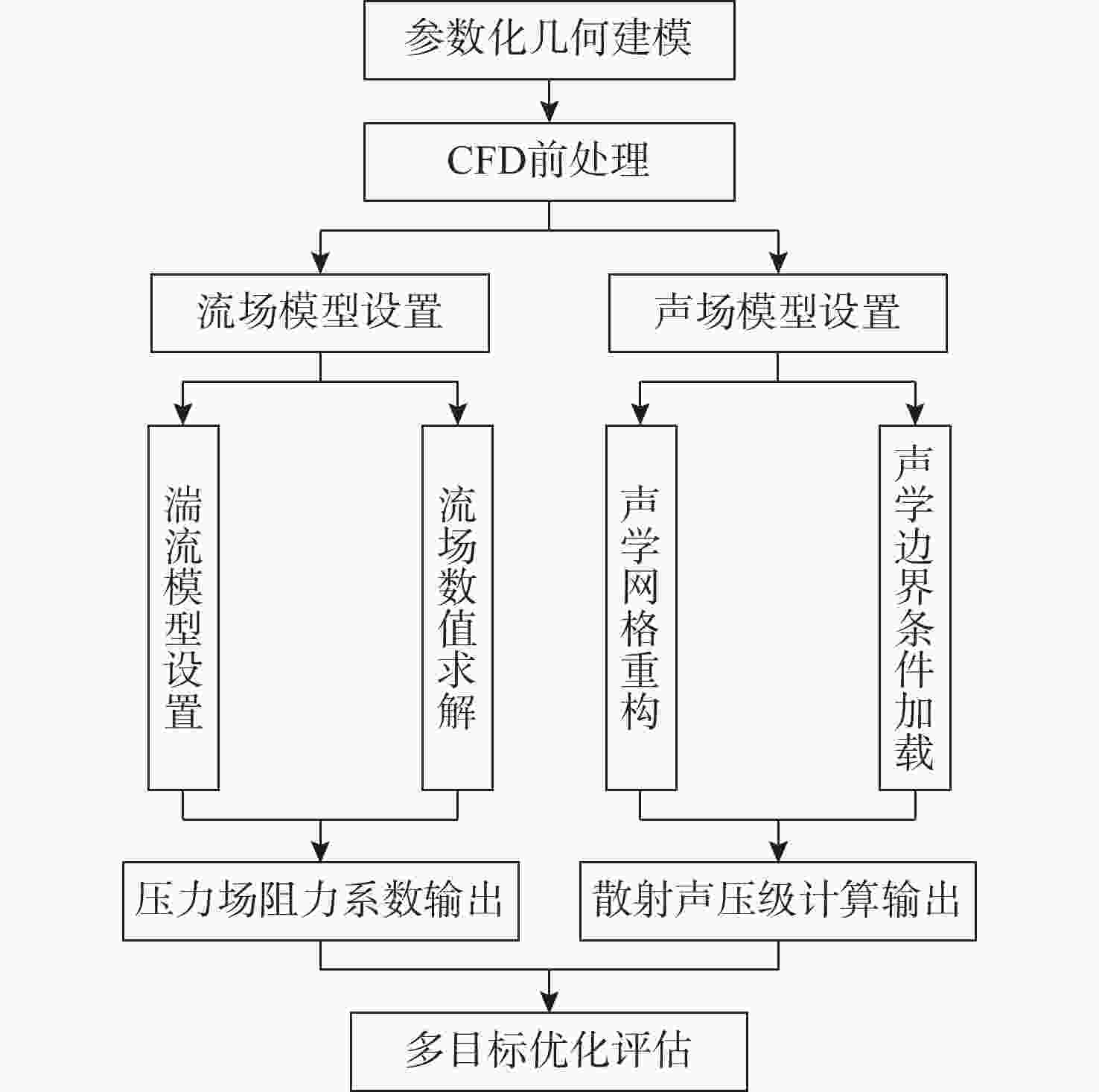
 下载:
下载:

